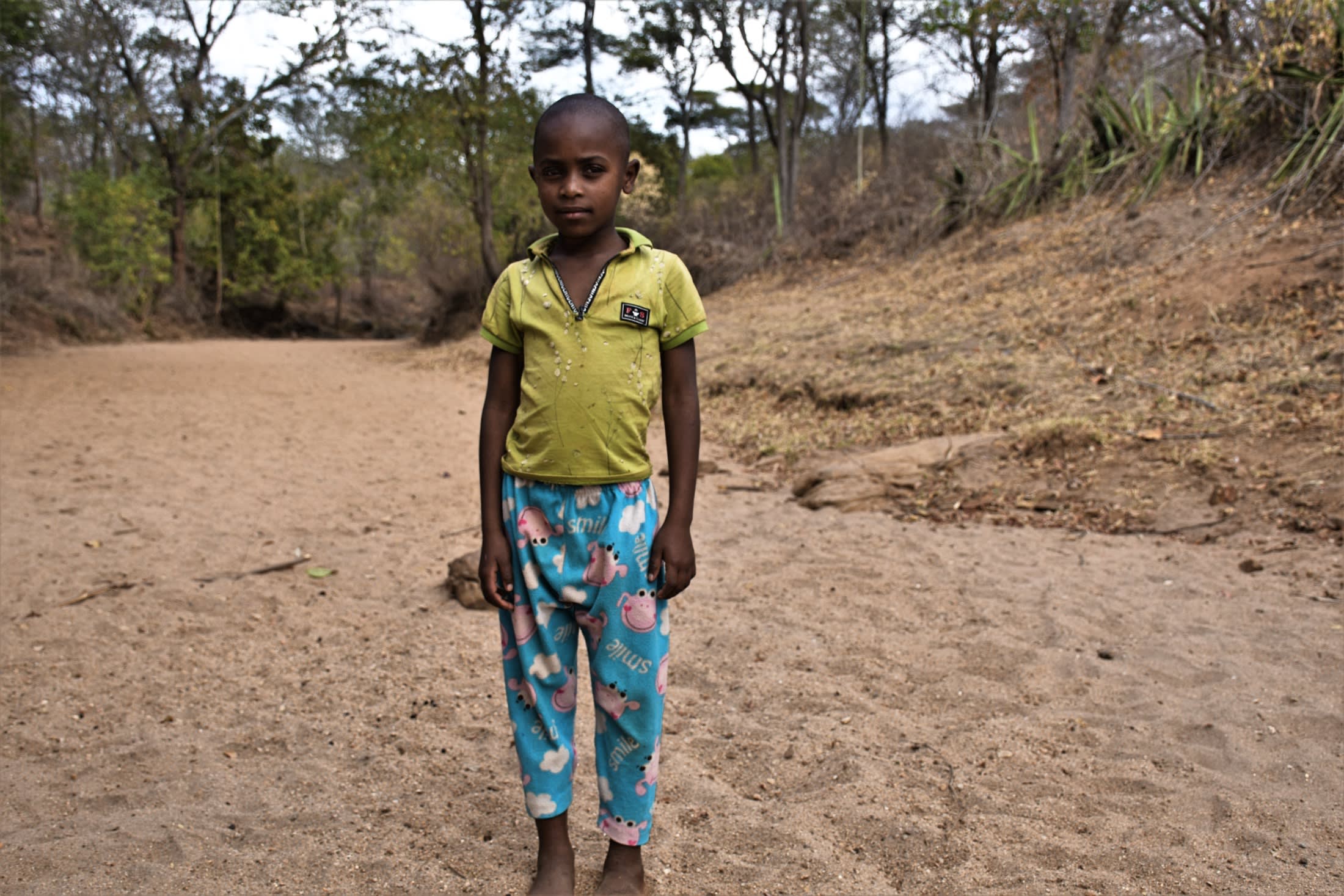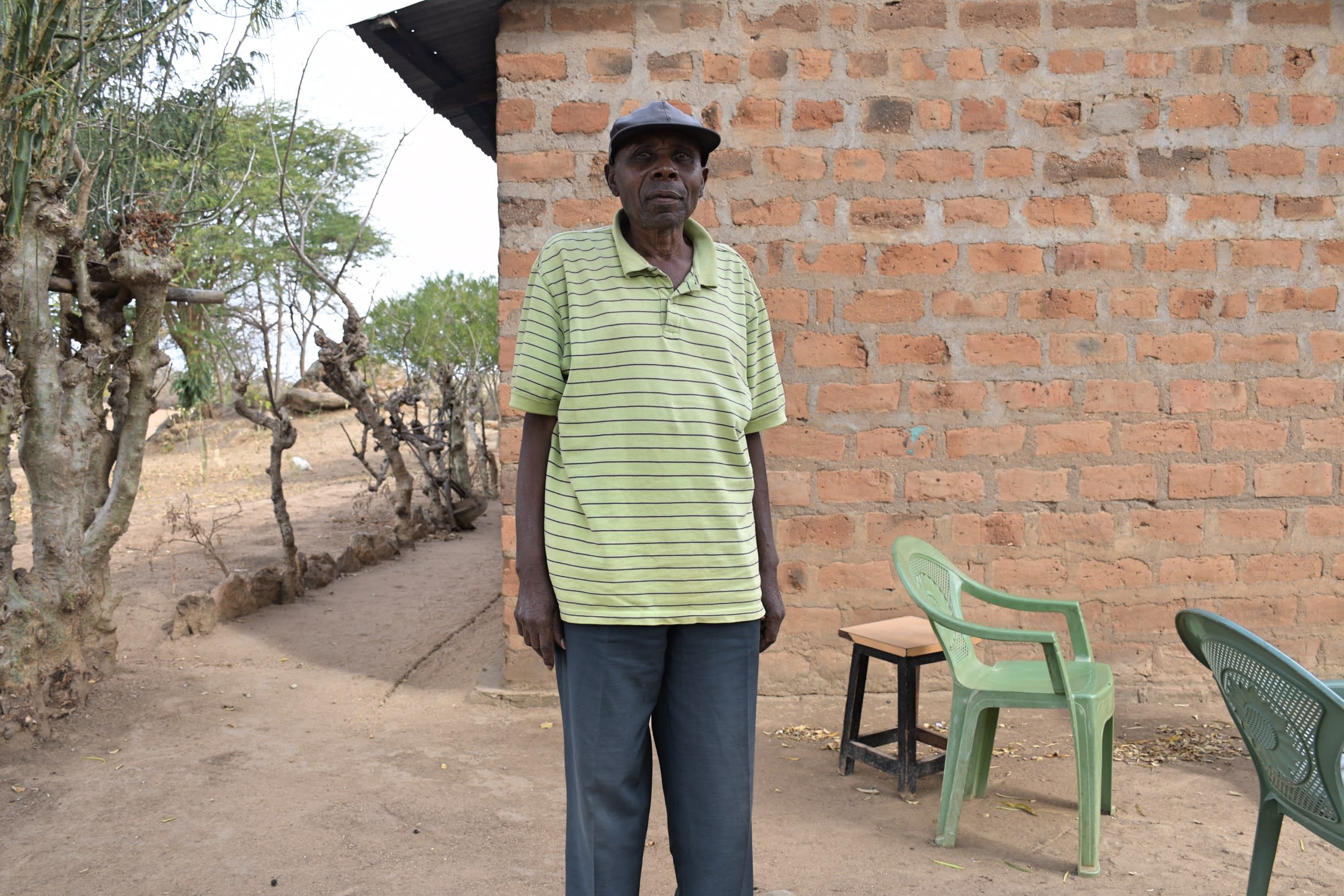The 1,200 people living in this area are barely making ends meet, and it's due in large part to the severity of their water crisis.
The closest water source is a staggering eight kilometers (4.97 miles) away. Some residents can only make one trip to the water source daily because of the great distance.
"Sometimes there is no water at home, thus I have to forego classes and remain at home, like today," said eight-year-old Jessica (pictured below). "I also get tired from the long walks to the distant scoop holes and cannot get time to play with friends or study."

Because the water sources are so far away, community members have to stretch a few liters of water across all their possible water uses.
73-year-old farmer Francis Muli (pictured below) has trouble maintaining his cattle farm and garden with so little water. "There is no pasture or enough water due to the water shortage and severe drought," he explained. "Thus, my cattle consume dust, which affects the appendix and makes the cow die. And I have to sell [my cattle] because there is no water for drinking."

What's even worse is that the water they can fetch is salty, brown, and unsafe. The community members dig scoop holes in dry riverbeds in an attempt to reach the only water left in this arid region.

But this water has nothing to recommend it. Once the hole is dug, the water is exposed to wildlife as well as environmental contaminants. Drinking it infects community members with typhoid, cholera, and more. When it's used for bathing and laundry, people develop itchy skin rashes.
"There is little water to cook or drink, and the available option is unsafe, exposing me to infections like typhoid and amoeba," said Francis. "For instance, I often get stomachaches, including today. I have to use water sparingly, which negatively affects my personal hygiene and sanitation."
"The water from the scoop holes is also used by livestock that excrete nearby, thus contaminating it and causing stomach upsets and amoeba," Jessica said.
A nearby water source has the power to transform people's lives. With better health, more time, and more energy, these community members will be able to plan and do better things than just fetching water.
Note: Our proposed water point can only serve 300 people per day. We are working with the community to identify other water solutions that will ensure all 1,200 people in the community have access to safe and reliable drinking water.
What We Can Do:
Our main entry point into this community has been the Self-Help Group, which comprises households working together to address water and food scarcity in their region. These members will be our hands and feet in constructing water projects and spreading the message of good hygiene and sanitation to everyone.
Hand-Dug Well
This particular hand-dug well will be built adjacent to a sand dam project, which will supply clean drinking water once it rains. We have provided the group with the tools needed for excavation. With the guidance of our artisans and mechanics, the excavated well will be cased, sealed with a well pad, and then finished with a new AfriDev pump.
Excavation takes a month or more on average, depending on the nature of the rock beneath. Construction of the well lining and installation of the pump takes 12 days maximum. The well will be lined with a concrete wall including perforations so that once it rains, water will filter in from the sand dam.
This well will bring clean water closer to families.
New Knowledge
These community members currently do their best to practice good hygiene and sanitation, but their severe lack of water has significantly hindered reaching their fullest potential.
We will hold hygiene and sanitation training sessions with the Self-Help Group and other community members to teach essential hygiene practices and daily habits to establish at the personal, household, and community levels. This training will help to ensure that participants have the knowledge they need to make the most out of their new water point as soon as the water is flowing.
One of the most important topics we plan to cover is handling, storage, and water treatment. Having a clean water source will be extremely helpful, but it is useless if water gets contaminated when it is consumed. We will also emphasize the importance of handwashing.
The community and we firmly believe that all of these components will work together to improve living standards here, which will help to unlock the potential for these community members to live better, healthier lives.
We typically work with self-help groups for 3 to 5 years on multiple water projects. We will conduct follow-up visits and refresher training during this period and remain in contact with the group after all of the projects are completed to support their efforts to improve sanitation and hygiene.





 Protected Dug Well
Protected Dug Well
 Rehabilitation Project
Rehabilitation Project


























